Rubic.exchange has built a ready-to-use multichain swap protocol to save cryptocurrency users time, money, and anxiety for DeFi transactions.
In doing so, Rubic hopes to further the adoption of decentralised finance on an industry-wide scale; they have already integrated eleven of the top DeFi networks into their own solution to perhaps the sector’s most pressing problem.
Here, we’ll be talking about:
- The current problems with decentralised finance
- Rubic’s product and vision
- $RBC analysis
- The future of Rubic and $RBC
Problems with DeFi
Decentralised finance is a beautiful phenomenon. By presenting users of financial services offered by traditional centralised entities (and those that cannot use them!) with an alternative that is free from trust in single points of failure, offers superior rewards and flexibility to traditional methodologies, as well providing the capacity for anyone the world over to participate, mass adoption of the lovingly named ‘DeFi’ is capable of revolutionising the financial landscape and changing the lives of ordinary people for the better.
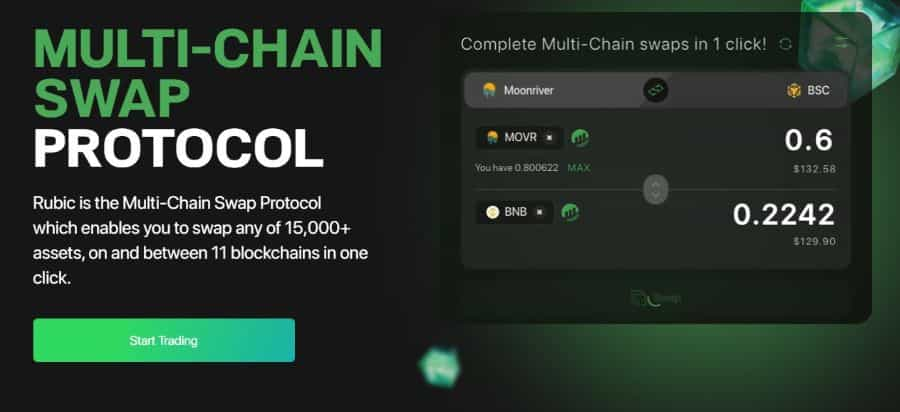
However, the problem is ‘how do we get there?’…
According to data from DappRadar, whilst total value locked in DeFi reached the $190 billion mark in November of 2022, amidst the broader market surge, current TVL sits at around $140 billion, in the wake of recent bullish market moves, but collapsed to as low as $114 billion in recent weeks and months.
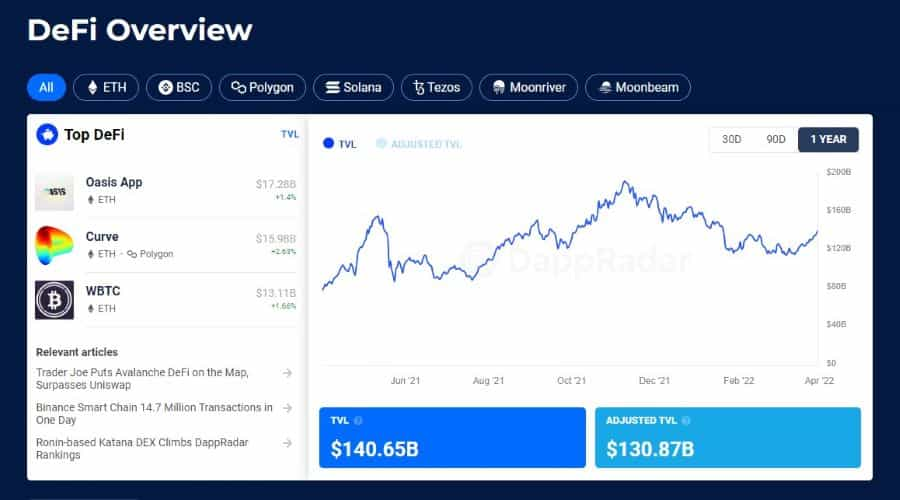
Make no mistake, tens of billions of dollars is no small sum, even in the crazy world of cryptocurrency, wherein funding rounds seem to become more ludicrous by the day.
However, given the magnitude of the cryptocurrency markets, at over $2 trillion, coupled with the level of development, media attention, funding and reach of the DeFi sector (even extending into many aspects of niche spaces such as gamefi), the figure is startlingly low, relatively speaking.
The reasons for the apparent disparity are several-fold. Such factors include liquidity issues compared to centralised counterparts, poor user experience, security concerns, lack of fiat solutions, etc.
Given the desensitisation of the crypto community to financial and security risks, it seems plausible to claim that one of the most significant barriers to mass DeFi use and adoption is complexity…
A Convoluted Process
An article from DefiPill about the complications involved in DeFi gave the following elegant example:
Consider the following scenario: Joe hears about Rome DAO and wants to buy their tokens. He joins their Discord and asks for help, only to be met with the following response, “Joe, it’s easy. You just have to buy Ethereum, trade that Ethereum for FRAX stable coin, use the SolarBeamdecentralisedd exchange to bridge the FRAX over to the MoonRiver network, and then swap your FRAX for ROME using the FRAX/ROME pool.”
On average, an operation in the decentralised finance space takes multiple separate actions, many of which are time-consuming and, speaking from experience, cause no shortage of investor stress and the aggressive refreshing of web pages…
When you compare the above to registering an account on, for instance, an exchange like KuCoin and making a play funded via debit card, it seems clear why many DeFi services cannot compete.
The Rubic Vision
Rubic is a project geared entirely around making life exponentially simpler for users of decentralised finance and, thereby, driving the mass adoption that both the crypto community and the wider world should so crave.
They, too, see complexity as the biggest hurdle in DeFi. When quizzed about what they believe to be the primary issues in decentralised finance, Rubic’s marketing officer, Collin O’Brien, responded with the following:
The biggest problem facing DeFi is the overcomplication of the entire experience. Even for very tech-savvy people, it can be confusing and time-consuming, riddled with situations that can create real anxiety.
Rubic’s response to this is their multi-chain swap protocol that uses decentralised exchange aggregation and cross-chain routing solutions that have taken no small degree of time to construct securely to give DeFi users everywhere the ability to make instant swaps and compress the myriad steps involved in decentralised finance into just ‘one click’ in a way that is fast, reliable and inexpensive.
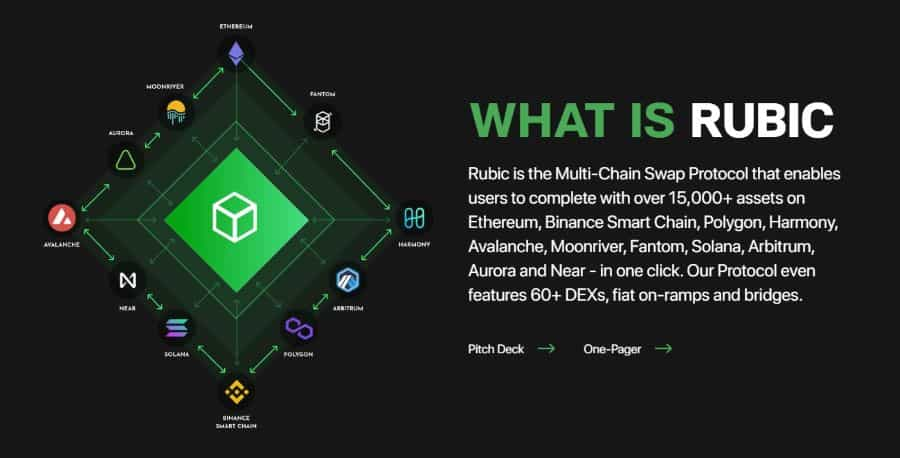
Both Rubic’s multichain contracts and their staking contracts have been fully audited – something that cannot necessarily be said for all operators in the space.
As far as Rubic’s co-founder, Alexandra Korneva, is concerned, DeFi operations should be “very easy and very fast and very inexpensive”.
Rubic’s widget supports the connection of multiple wallets across multiple chains, including MetaMask, Phantom, Coinbase and more. After that, it is as simple as selecting the tokens you want to sell/receive, and their easy-to-use tool has already accrued nearly $210 million in total transaction volume.
As you might imagine, Rubic’s community is an avid one that has seen growth across various high-engagement platforms such as Twitter, Discord and Telegram. What’s more, that community has continued its steady expansion throughout the cold early months of 2022 for the wider crypto markets – a time when both other token prices and communities were stagnating, at best.
Rubic and $RBC have received attention from the likes of Crypto Banter, Altcoin Daily and Chico Crypto on YouTube, to name just a few.
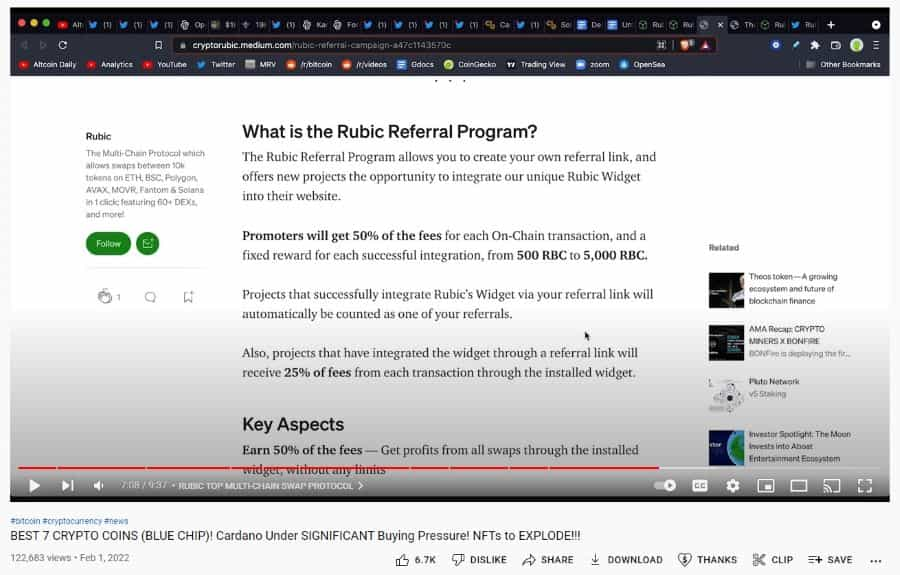
The primary hurdle that Rubic is trying to overcome, according to the team, is adoption and spreading the word about what their protocol has to offer.
“We’ve spoken to multiple users, and once you use Rubic, it becomes a part of your crypto life.”
Both the team and the Rubic community believe that once users experience the extent to which using the Rubic protocol simplifies life in the DeFi space, the rest will come naturally.
That said, the adoption of Rubic is building following widget integration partnerships with some top tier projects in the space, including well-known metaverse project, Netvrk ($NTVRK), and grants have been secured from the likes of Polygon, Harmony, NEAR and the Tezos Foundation.
The implementation of their white label solution SDK, allowing various decentralized applications, wallets and others to benefit from fee-sharing mechanisms, is a development that may well allow the Rubic ecosystem to grow further and gain exposure to new demographics.
The $RBC Token
The $RBC token, fees aside, has had some exciting developments surrounding staking features.
February 23rd saw the end of Rubic’s first staking round, operated on a first-come, first-served basis, with rewards allocated in $BRBC. Users received a total APR of 82% in that initial two-month period.
Rubic’s second staking round began in early March with a staking range of 1,000-100,000 $BRBC. The duration period is six months, and, at full capacity, users should expect 30% APR, with the option to join or withdraw assets at any time available.
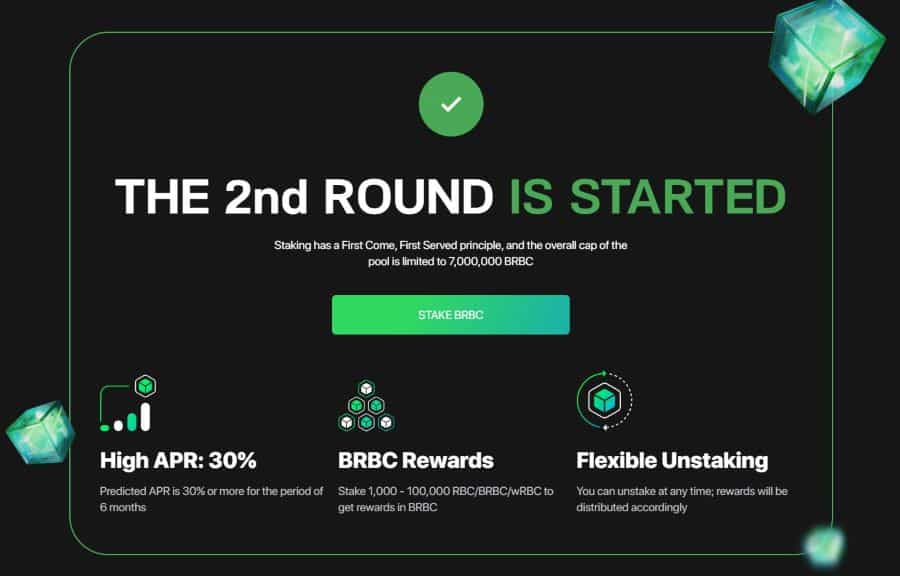
It is worth noting that not only is the staking of a defined volume of $RBC required to operate as a validator on the protocol, but token ownership also plays a key role in Rubic’s governance, and there is an expectation that this will expand in the future.
Rubic has held well above launch prices in terms of token performance throughout some of the most bearish periods of 2021.
CoinMarketCap data dates back to late 2020, and $RBC saw all-time highs of approximately $0.70 in October of last year. At the time of writing, $RBC is trading at around $0.32 – less than 50% of all-time highs. This is unsurprising given the cold months of early 2022, with tokens possessing lower market capitalisation being hit hardest by the downward surge.
The Future of Rubic
Product developments such as Beta version SDKs and staking launches aside, perhaps the most exciting update for the Rubic ecosystem in recent weeks is its listing on Kraken Exchange, coupled with its pre-existing ETH and USDT pairings on Gate.io.
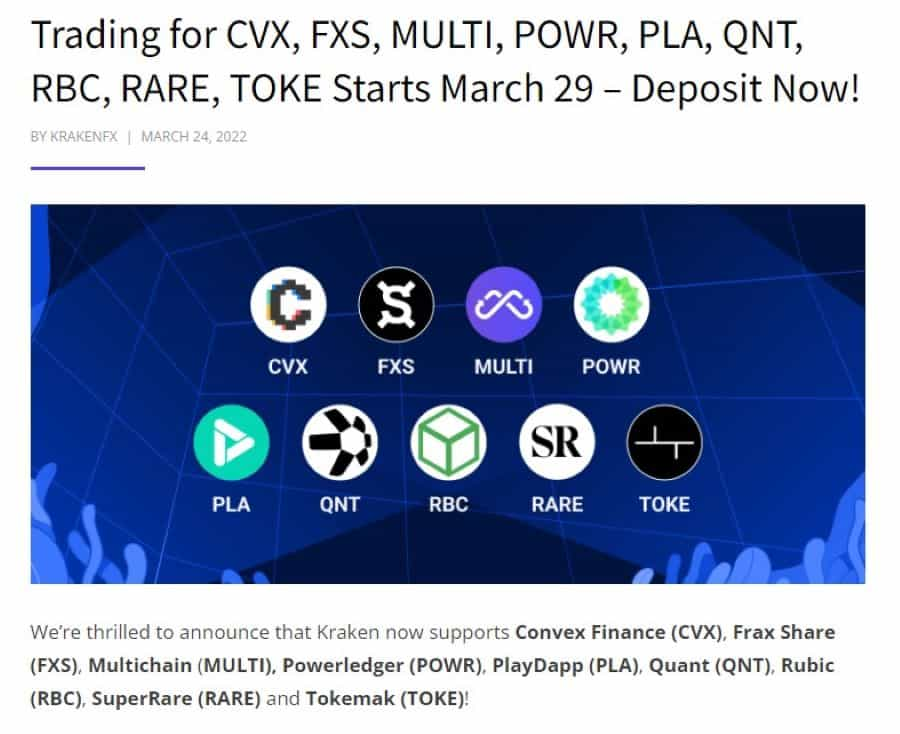
Kraken is the world’s fourth-biggest exchange by transaction volume, according to data from CoinMarketCap. At the time of writing, its 24-hour transaction volume stands at more than $1.5 billion.
$RBC trading on Kraken began at 15:30 UTC on 29th March and was launched on the platform alongside the likes of Quant Network (QNT) – a cryptocurrency with a market cap of $1.8 billion, placing it 65th in CMC’s market cap rankings.
Listed on Kraken only very recently, the impact of a major centralised exchange listing on $RBC performance is still to be witnessed. However, a higher number of potential buyers, both for utility and speculative purposes, gaining direct fiat-currency access to $RBC could present the opportunity that Rubic needs to spread its message and trigger wider adoption of its multichain protocol.
In terms of upcoming milestones, there is some expectation around mobile application development. As per their roadmap, a Rubic mobile application (for iOS and Android) is scheduled to take form in Q1-Q2 of this year.
The importance of a useable mobile interface is overlooked by some cryptocurrency projects, especially those operating in the decentralised finance space. Implementing a mobile widget only makes the services in question more accessible to users, and it is encouraging to see that Rubic has considered this in its plans for 2022.
One element of Rubic and their team which is particularly impressive is their consistency in hitting key milestones and development goals. Their technical team have been “burning the midnight oil”, as O’Brien puts it, to bring so many blockchain integrations to the Rubic protocol. As a result, elements like staking, chain support and SDK production have been delivered effectively and in line with their development timeframes – something that only a small minority of cryptocurrency projects and teams can achieve consistently.
The most straightforward way to keep abreast of Rubic’s recent and upcoming milestones, achievements and developments is to stay tuned to their social channels.
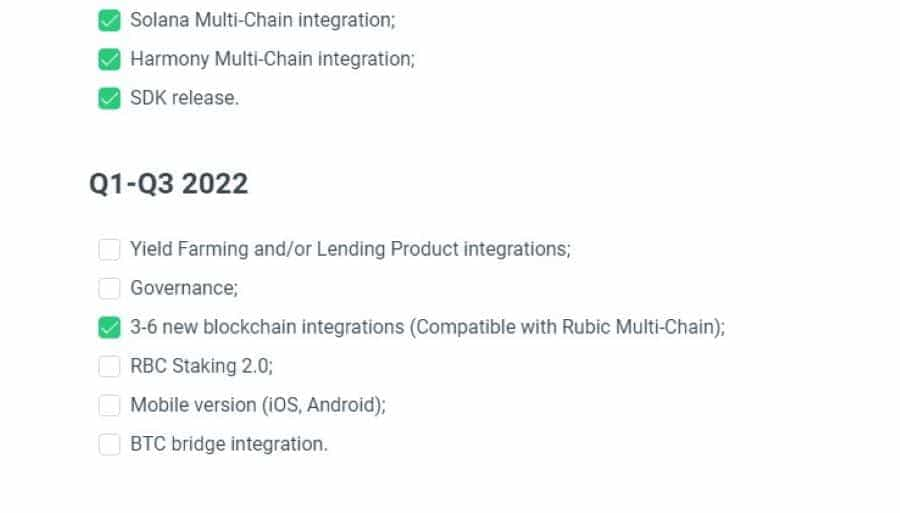
Rubic’s Medium yields in-depth weekly updates from the team behind RBC, which are clearly broken down into sections such as ‘Marketing’ and ‘Tech Development’, as well as in-depth pieces discussing the workings of the protocol, and key features such as their referral program and staking options.
Conclusion
Rubic’s multichain swaps protocol, which offers a working solution to a problem that is currently suffocating the adoption of the DeFi ecosystem, has recently become available to purchase on a top-5 centralised exchange, is true to its development goals and appears transparent with its community.
As articulated by the team itself, their greatest goal is public awareness and adoption. This is undoubtedly something that Rubic will be looking to address extensively in the coming months, having already produced a working product with access to myriad different blockchains and the various tokens that call them home.
Their recent pairing on Kraken could provide a healthy catalyst for community expansion and increased protocol transaction volume. However, the healthy ecosystem growth and increased coverage by external parties across media platforms like YouTube could be considered an encouraging sign in its own right.
If a workable mobile application is developed within expected timeframes, and the $RBC token is gifted additional utility, Rubic may be well-positioned to capture some of the value that already exists in decentralised finance, as well as making the sector, as a whole, more accessible.
Now, I must disclaim that I am personally invested in Rubic.exchange’s $RBC token. Investing in any cryptocurrency should be considered a risky affair, even in the case of blue-chip assets like BTC and ETH. However, the above reasoning is simply my personal assessment and the rationale I used when looking into $RBC.
Disclaimer: These are the writer’s opinions and should not be considered investment advice. Readers should do their own research.


